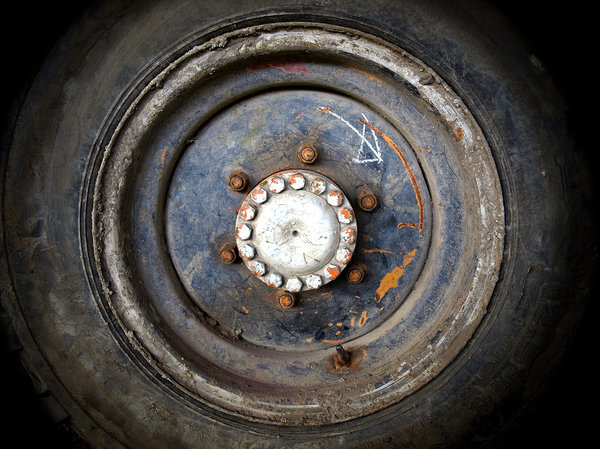There is little quality control in the used car industry, and just because a tire looks like it is in perfect shape does not mean it's safe. Many people rely on the tread depth to determine its condition, but a tire could look completely brand-new, have never been used, and have never touched the ground, but be over-aged to the point where the rubber compounds cannot support the weight of your car.
- Rubber compounds oxidizes, causing cracks in the rubber develop over time. The internal adhesive bonds between the various layers of the tire begin to break down, and the steels belts in the tread may separate from the rest of the tire.
- The tire becomes worn and more susceptible to malfunction or puncture.
What are the dangers of old tires?
- Function. Old tires have a worn-out tread, causing reduced traction on the road and requiring a longer stopping distance.
- Storage. The conditions of storage for spare tires can deteriorate the tires. Mounting the spare tire underneath or behind the vehicle exposes it to dirt and other elements, while storing in the trunk is comparable to baking it in a miniature oven.
- Blown tires. An old tire has a higher chance of puncture or completely blowing out, which can cause loss of vehicle control.
- Temperature and weather. Worn tires can be especially dangerous during times of bad weather, such as rainstorms, since the reduced grip can cause sliding or hydroplaning. Warmer/coastal climates and exposure to sunlight can hasten the aging process.
- Use. The duration of the tires can depend on the nature of its use. Rapid braking and acceleration, road conditions, bumping into curbs, and irregular maintenance can contribute to decline in quality.
How can I determine the age of my tires?
- All tires are stamped at the factory with a Department of Transportation (DOT) code with 11-14 digits on the sidewall. For the last four digits, the first two represents the week of manufacture and the last two represents the year. Even when you are buying new cars, you should check the date to ensure that the tires were not stored in a warehouse for a long time prior to delivery. If it was manufactured more than 6 months earlier, consider asking for newer tires, since tires are still subject to oxidation even when not in use.
All in all, while it may be tempting to save money by equipping your vehicle with your old or used tires, consider the risks. Driving on unsafe tires can lead to serious accidents, and you should never take a chance when it comes to your vehicle or, more importantly, your own safety.
Picture courtesy: http://l.rgbimg.com/cache1n8lEo/users/j/ja/jazza/600/2djsV4n.jpg

